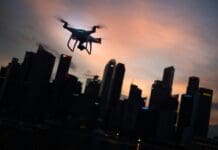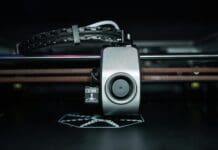This post is also available in:
 עברית (Hebrew)
עברית (Hebrew)
A new study regarding how human brains react to multiple stimuli and stress resulted in some surprising discoveries with application during deadly police force confrontations. The research led by Dr. Steven Yantis at Johns Hopkins University Department of Psychological and Brain Sciences observed adults aged 19-35 in a lab setting as they viewed changing computer displays of multiple numbers and letters, and as they listened to three voices simultaneously speaking numbers and letters, created a scenario many people encounter daily. Reviewing the captured brain activity during the exposure, researchers found when the adults focused on the visual tasks like tunneling in on the computer screen, the auditory stimuli recorded decreased significantly. Conversely, when the subjects’ attention focused on the spoken messages, the visual image activity diminished.
Yantis and the researchers explained to officer.com: “When attention is deployed to one modality, it necessarily extracts a cost on another modality. The brain can’t simultaneously give full attention to both.”
Dr. Bill Lewinski saw the value of this study, vis-à-vis its application during deadly force confrontations. He opined the results explain why officers often report they never heard their weapons fire during a shooting, or never heard a partner shout a warning to them. The research further clarifies why an officer may not see everything during a shooting, such as bystanders or even fellow officers. Tunnel vision and auditory exclusion are real and dangerously impact the way officers do their job. Another important development of this groundbreaking research is the ability to use scientifically the results as a potential defense at criminal and civil trials.
Another research project, with similar applications, this one in Utah, dealt with subjects talking on a cell phone while operating a driving simulator. Focused on measuring reaction time, the study found when listening to something, e.g. a cell phone, one’s reaction to a sudden development such as brake lights in front of you is significantly lower. Once again, Dr. Lewinski saw a parallel in this study to law enforcement. Distractions can be varied, and if you’re concentrating on a particular thing in your field of vision you may not pick up on other things you’re not concentrating on.
“For example, if you’re intently watching a suspect’s right hand because you think he might produce a weapon there and instead he comes up with a weapon in his left hand, your reaction time will be significantly impaired,” Lewinski said. The research also points out the danger an officer faces when dealing with multiple subjects. Since you can only focus effectively on one thing at a time, you may miss a threat, or if you do see the threat, your reaction may be delayed. Falling further behind the power curve can have deadly results.


























